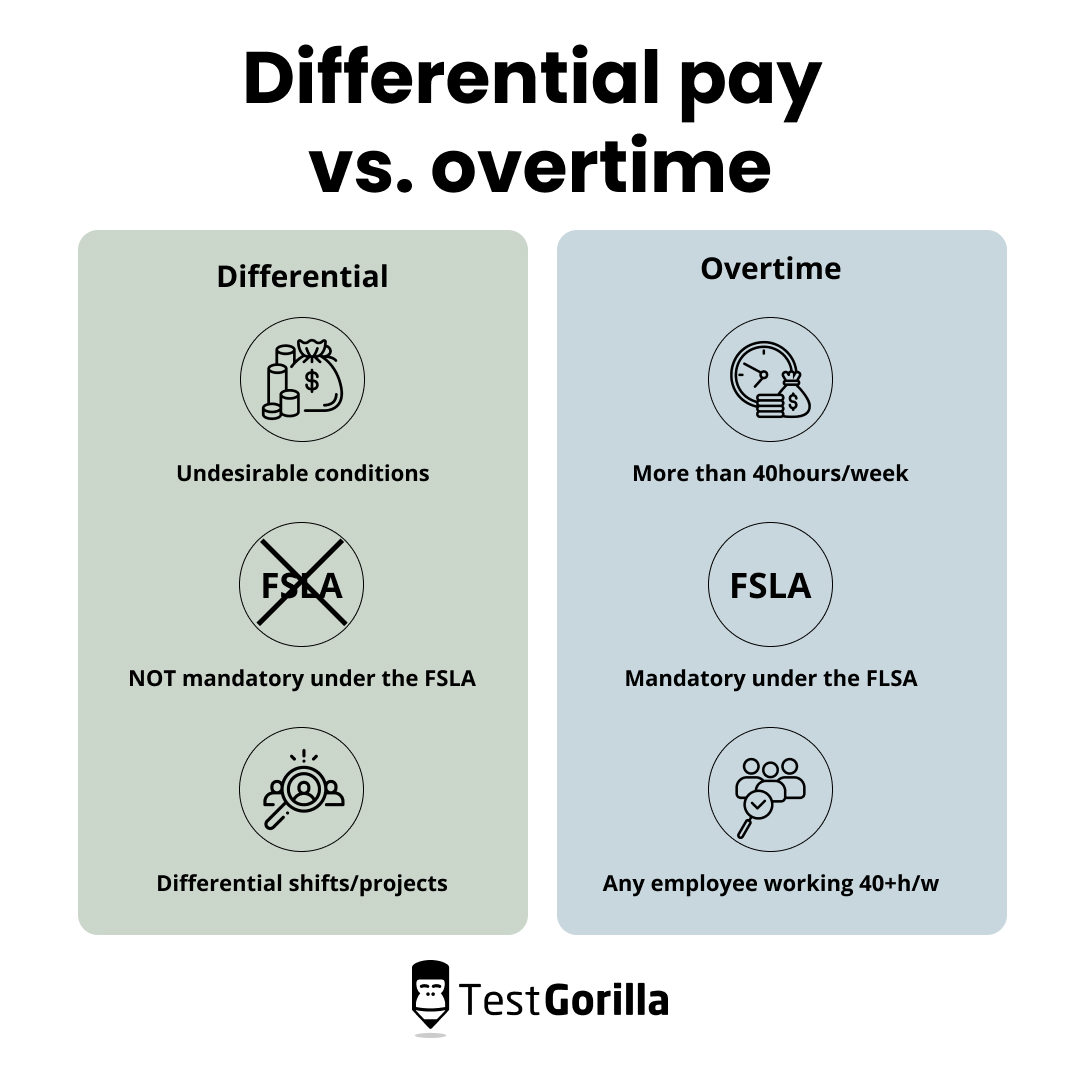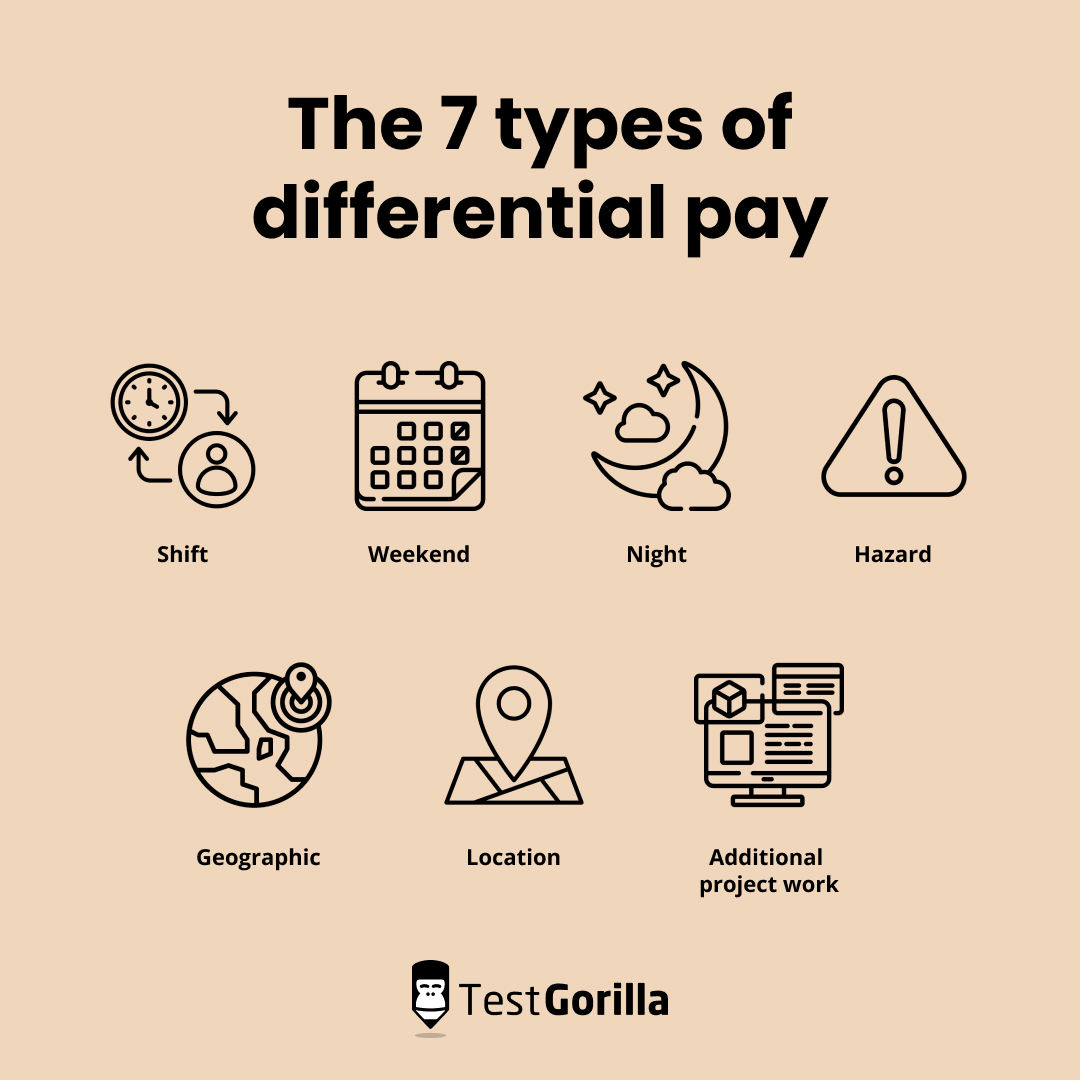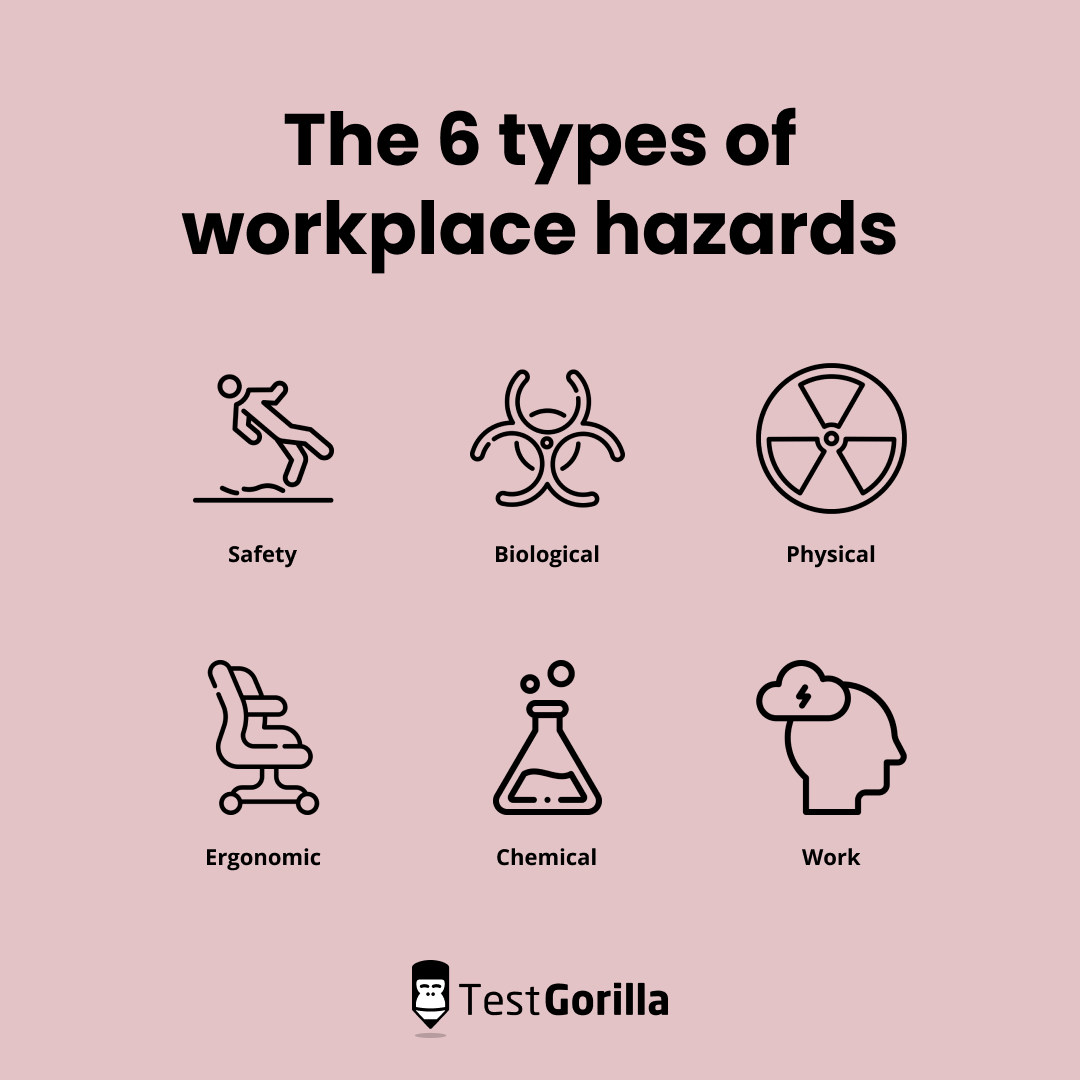It’s hard enough to find good and specialized candidates with the right skills. It’s even harder to find them for jobs that involve strange hours or safety risks.
You need additional incentives and perks to make unpopular jobs more appealing to candidates, help them perform them more safely and comfortably, and retain them longer.
Fair compensation via shift differential pay is the tangible way to do that.
But here’s a heads up: Retaining a differential shift worker takes more than a bump above regular pay.
So make sure you read until the end.
We’ll explain differential pay, why it can be crucial for motivating candidates to accept a job that involves off-beat shifts, and what else you need to entice workers to work undesirable shifts.
Table of contents
- What is differential pay?
- The 7 types of differential pay
- Which industries rely on differential pay?
- How to calculate differential pay
- When (and why) should you offer differential pay to your workers?
- Take a step back: How do you recruit staff that accepts differential pay shifts and helps you meet customer demands?
- Identify and prepare differential pay candidates using talent assessments
What is differential pay?
Differential pay is a premium rate on top of the base pay of employees who work during non-standard hours, under special circumstances, or in unfavorable working conditions.
Some differential pay examples include night shift workers or employees who agree to take different days off than other employees, so the customers can still reach the company when everyone else is away.
Filling positions and retaining employees is tricky enough for regular roles. The talent pool of candidates who accept unpopular work times and circumstances is even slimmer.
Differential pay is one way to fix the problem.
It’s an incentive and reward companies give to differential shift workers because, otherwise, these jobs would never get done.
Differential pay vs. overtime
Both of these terms include extra pay, but they have some crucial differences if you look at them side-by-side:
Differential pay | Overtime pay |
Bump in pay based on undesirable hours or unfavorable conditions of work compared with the normal 9-5 shift | Bump in pay or overtime rate based on the employee exceeding the standard total of 40 hours of work in a workweek |
Not mandated by the Department of Labor for private employers under the Fair Labor Standards Act (FLSA) | Mandatory under the FLSA |
Applies to specific employees who accept differential shifts or projects | Applies to any employee who exceeds their standard hours and works overtime hours, regardless of their schedule or project |
What’s different about those on differential shifts compared to standard workers is the schedule or specific circumstances, not the number of hours they complete per week.
Employees on differential shifts are compensated on a shift premium rate simply because most employees prefer not to work at those times and in those conditions.
Importantly, differential pay isn’t mandatory for private employers under the Fair Labor Standards Act (FLSA).
On the other hand, overtime is a mandatory bump in pay based on the employee exceeding the standard 40 hours of work per week.
It’s not about which shifts or hours they’re working but the total number per week, which applies to all employees regardless of their schedules.
The 7 types of differential pay
So what are those unfavorable conditions, and how do you know if the role you’re trying to fill calls for a differential rate of pay?
The examples below can give you an idea.
1. Shift differential pay
Shift differential pay is common in companies and industries where employees work two or three shifts, like manufacturing.
Typically, the first shift is considered standard, and most employees prefer it.
Because that’s the default, anyone working the second or third shift has eligibility for shift differential pay as a reward for working those hours.
2. Weekend differential pay
For roles that don’t normally include weekend shifts, companies use weekend differential pay if that makes sense for them.
Retail is a great example. Most people have the time and desire to shop on weekends, which poses a lucrative opportunity for malls and stores to profit from peak traffic.
Similarly, some companies offer holiday differential pay to meet consumer demands or ensure the company isn’t in total shutdown.
That way, the employees holding the fort get something out of working shifts for holiday pay instead of feeling trapped and unappreciated while their families dig into the Thanksgiving turkey or the Christmas feast.
3. Night differential pay
Night differential pay applies when most of the employee’s regular work shifts (without overtime) fall between 3 pm and 8 am.
Let’s say the employee works eight-hour shifts.
They’re eligible for night differential pay if more than four hours of their shift falls in the given time window, even if the whole shift doesn’t.
For example, working from 12 pm to 8 pm already counts because the majority of these hours (five out of eight) fall during night hours.
4. Hazard pay
Hazard pay differential applies in situations when the employee is working under circumstances that carry personal health and safety risks:
When an employee works in a country affected by war
When work exposes them to dangerous substances or diseases because of working with ill people
When they work in environments with extreme weather conditions or high radiation
When work exposes the employee to flammable gases or dangerous solvents, like in cleaning facilities
When handling explosives or dangerous machinery
When the employee does physically strenuous labor
For example, the municipal government of Detroit, Michigan, offered hazard pay to first responders and public-facing employees during the Covid-19 outbreak in 2020.
5. Geographic pay differential
A geographic pay differential refers to a difference in pay for similar jobs based in different cities, countries, or regions to account for variations in labor and housing costs between them.
Companies pay employees with the same job description differently in a large metropolitan location than in a small town with a lower cost of living.
International companies like Lidl often adjust salaries based on each country's standards.
6. Location pay differential
Similarly to geographic pay differential, location differential can apply to employees working from different sites in the same city.
Let’s take a chain of stores, for instance.
If certain locations are less favored by workers or are specific in some way – the airport location versus the downtown store – the employer can use location pay differential to ensure it adequately staffs these stores.
Location pay differential is also a buzzing topic relating to remote versus onsite work, hand in hand with the return to office debate.
Some companies pay their workers less if they move to a suburban area.
In 2020, Mark Zuckerberg famously said his employees could work from anywhere, but their pay could be adjusted accordingly.
This controversy exploded into an ongoing debate, forming a gap between the believers in location differential pay and the so-called “location-agnostics” – companies like Reddit, which vow to pay workers the same regardless of location.
The rationale is that if you perform the same or even higher quality of work, why should you be paid less based on location?
A location pay differential in remote work enforces physical presence as a performance indicator without merit and disadvantages staff who can’t work onsite full-time, like caregivers or people with disabilities.
For the record, as an international and fully-remote company, TestGorilla is location-agnostic.
7. Additional project work
Sometimes, a task or project isn’t anyone’s top priority, so it has no allocated staffing.
People have other responsibilities or prefer to concentrate on immediate projects.
Maybe you thought it would work out, but it ended up collecting dust in the corner, and now it’s getting to a point when you need to get it over with.
For one-off projects that none of your employees want to do, you can offer shift differentials to entice them and spend less than you would to hire and train someone new.
Which industries rely on differential pay?
Below are some industries and specific jobs where shift differential pay is standard practice.
Industry | Example |
Manufacturing | Manual laborers |
Healthcare | Nurses |
Security | Guards, surveillance officers |
Customer support | Call center representatives |
Hospitality | Cleaners, waitstaff |
Construction | Builders |
As a reminder, differential pay isn’t mandatory, and you can use it for specific projects and situations for a limited time.
It doesn’t have to be an indefinite bump in pay or reserved for full-time human resources only.
How to calculate differential pay
Okay, so how do you calculate differential pay, and what are some standard practices or average differentials to follow?
It depends on the type of responsibilities and conditions included.
For example, a nurse typically earns a higher night shift differential than a store clerk because the work involves specialized skills and a higher degree of focus.
Some companies pay a differential by counting double hours during the shift in question. Others pay a premium pay or shift premium by adding a percentage of the pay on top.
Use this simple formula for the computation of the differential rate for hourly employees:
Normal hourly wage x % differential
For example, if the base rate is $30/hour and you’re choosing a 20% differential rate:
$30 x 20% = 6$, so your differential pay would be $36/hour.
The standard differential rate falls between 10% and 20%, and employers usually pay a higher hourly rate for third-shift workers than for the second shift.
For a frame of reference, Amazon’s pay policy shows that second-shift workers receive an additional $0.50 per hour, and graveyard shift workers receive a $1 differential.
When (and why) should you offer differential pay to your workers?
Differential pay is typically not the first course of action.
If something about the shift or job makes it unpopular, see if you can change it before you look for ways to convince people to do it anyway.
You may not need to hire an overnight support rep who would rather be sleeping if you install a chatbot that can answer most queries overnight.
Sometimes you don’t need differential pay.
But other times, there’s not much else you can do to make a job worthwhile to employees, so you need differential pay as an external motivator.
These are the primary use cases of differential pay when it makes sense for HR to approve this practice:
When you have to be available on-call like for emergency help and services, like firefighters, paramedics, and police officers
When you have a gap because nobody wants to work a certain shift or location, so you need to incentivize them and make it worth it
When there’s considerable customer demand and need for your services during non-traditional hours
When you need monitoring for maintenance or safety reasons, like a security guard or someone to keep an eye on the systems
When it helps you hit peak consumer traffic, like retail stores on weekends
When the job involves personal safety risks, like operating dangerous machinery
What about the opposite scenario: When is differential pay a bad idea? When can it lead to employees viewing you as an exploitative employer?
Location-based differential pay is a polarizing debate in this regard.
Even if you believe it’s justified, don’t expect your workforce to be happy about location differential pay between remote and in-office workers.
Punishing people for working remotely slims down your talent pool.
It automatically excludes candidates that can’t work in-office, damages your employer brand, and pushes talent away into the welcoming arms of more inclusive companies.
Besides that, shift differential pay is a bad idea when:
The pay difference is insignificant, say only 3% on top of standard pay
Workers don’t receive adequate support for their extra effort
Remember that differential shifts call for bonus compensation because work hours and conditions range from unpopular to uncomfortable to potentially hazardous.
These shifts can be unsocial. They carry various risks for the person’s physical and mental wellbeing – some owing to the job description, but others purely because of the strange hours.
To illustrate the hardships that come with differential shifts, here are some daily life contrasts between working the day shift and the night shift.
Daytime shift life | Night shift life |
It’s dark and quiet during your sleep time – there are ordinances for noise regulation | It’s bright and loud during your sleep time – there are lawnmowers, leaf blowers, and construction work |
On days off, you continue sleeping on your normal work schedule and have time for chores and other activities | On days off, you have less time to do chores because of normal office working hours and noise regulations – can’t mow your lawn at 2 am |
Organizing and meeting with loved ones is easy because chances are, they’re awake | You spend less time with loved ones because you’re mostly not awake during the workday |
You frequently socialize at work and can choose whether to surround yourself with people or be alone | You rarely socialize at work and spend the majority of time alone regardless of whether you like it or not |
You get plenty of sunlight which maintains your mental health and a healthy circadian cycle | You don’t get enough sunlight, which affects your mood, mental health, and sleep |
You have a variety of food options during your lunch breaks | Your food choices are what the gas station offers or packing your own food |
These issues compound and take a toll on a person’s life.
If you don’t account for all the risks, pay differential workers adequately, and take steps to support their wellbeing, you’ll struggle to retain them – or even hire them in the first place.
Take a step back: How do you recruit staff that accepts differential pay shifts and helps you meet customer demands?
Workers need to accept your offers for differential pay considering all the risks mentioned above that come with the job.
If they don’t, no one works outside their regular hours or takes an extra shift, leaving you with a gap.
The thing is, you don’t want to merely fill roles.
If workers aren’t comfortable and satisfied in their positions, engagement and performance drop – plus, they’re more likely to jump ship at the first better opportunity that comes their way.
Workers who accept differential pay shifts and jobs are in sensitive positions. As the employer, you need to help them stay healthy and supported and ensure there’s no extra weight on their shoulders.
Attracting and retaining differential pay workers boils down to three crucial things:
Skills-based hiring
Additional compensation and benefits
A healthy company culture
1. Skills-based hiring
Skills-based hiring is a powerful method involving talent assessment tests to scan and filter candidates inclusively based on the role’s requirements.
Instead of disqualifying great candidates based on which school they went to or mis-hiring because the candidate seemed good on paper, you get to the bottom of what’s important, namely, the candidate’s:
Skills
Personality
Motivation
These factors determine a person’s ability to perform a job.
They show you how the applicant could fit into the environment and what they’re looking for in a company, so you can find the best match for the open position.
A self-proclaimed night owl, sensitive to the sun, or preferring solitude alongside all the required skills could be an ideal fit for the night shift.
A candidate motivated to earn extra money could be someone you need for a project others would pass on.
Don’t judge candidates by resumes alone and miss out on these clues.
Uncovering key traits, abilities, and drivers behind your talent is crucial to filling sensitive positions where you’re more likely to have a higher turnover rate.
Talent assessments show nuanced differences between your applicants that could predict whether your new hire has what it takes, so you spare yourself the churn.
2. Additional compensation and benefits
Now that you know what you’re looking for and how to test it, you must make an attractive offer to secure your talent.
Combining shift differential pay with other custom benefits based on the job description is a good idea.
For instance, if you know the work exposes the differential worker to dangerous chemicals or radiation, health and wellness reimbursement benefits are a sensible way to monitor and support their wellbeing.
Explore other non-traditional benefits to boost your offer and make the job worth it.
3. A healthy company culture
All employees, particularly differential pay employees, need to know their workplace is a life-affirming environment and their employer doesn’t try to exploit them.
Whether you’ve actively worked to shape it or not, your company has a culture.
The personalities and opinions of your employees, your reward metrics, and any actions you did or didn’t take that sent a message influence your culture.
For example, when an employee reports harassment, your reaction shapes the culture.
Does a manager never take days off and make it a big deal when employees want to take theirs? Their ethics establish the expectations for everyone else.
Since your culture determines the success of any policy you implement and the satisfaction of your employees, it makes sense to think about which values and behaviors you want to stand by.
Here are some ways you can form a healthy, inclusive workplace culture:
Encourage mental health days and regular time off, and encourage your managers to be role models
Recognize and reward employees who show team player qualities, not just individual performance
Don’t tolerate harmful behavior like disrespect or bullying
Keep everyone in the loop, including remote workers
Listen to employee complaints and take them seriously
Hire diverse candidates and put policies in place to protect and support them
Let employees choose their work location and hours whenever possible
Work against mental health stigma by openly talking about problems and showing empathy
Showing and rewarding behaviors that embody your company values shapes the kind of workplace environment that workers love to be in every day.
Looking for a great shift coordinator to manage your shift-based workforce? Check out our guide to hiring a shift coordinator for your business.
Identify and prepare differential pay candidates using talent assessments
Differential shift jobs are often hard and unfavorable by default, and without the right support, differential workers fend for themselves in the dark – sometimes literally.
Differential pay is a great tangible reward, and it’s just one of the things you need for anyone to accept non-traditional hours or potentially dangerous work.
Keeping employees healthy, engaged, and fit for work requires more.
Now that you’ve got differential pay down, you can explore talent assessments to find the right culture add hire.
In the meantime, build a healthy workplace culture that welcomes and supports all workers.
Related posts
Hire the best candidates with TestGorilla
Create pre-employment assessments in minutes to screen candidates, save time, and hire the best talent.
Latest posts
The best advice in pre-employment testing, in your inbox.
No spam. Unsubscribe at any time.

Hire the best. No bias. No stress.
Our screening tests identify the best candidates and make your hiring decisions faster, easier, and bias-free.
Free resources
This checklist covers key features you should look for when choosing a skills testing platform
This resource will help you develop an onboarding checklist for new hires.
How to assess your candidates' attention to detail.
Learn how to get human resources certified through HRCI or SHRM.
Learn how you can improve the level of talent at your company.
Learn how CapitalT reduced hiring bias with online skills assessments.
Learn how to make the resume process more efficient and more effective.
Improve your hiring strategy with these 7 critical recruitment metrics.
Learn how Sukhi decreased time spent reviewing resumes by 83%!
Hire more efficiently with these hacks that 99% of recruiters aren't using.
Make a business case for diversity and inclusion initiatives with this data.




















